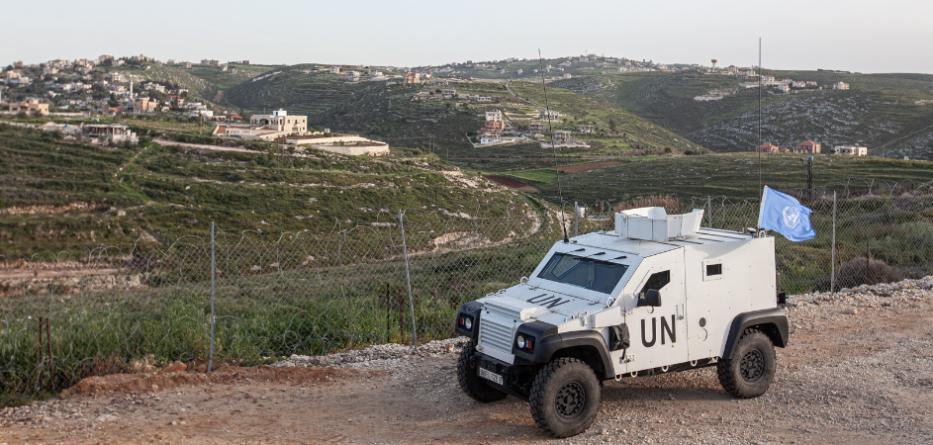The dreaded second front, that involving Hezbollah in Lebanon, in the war between Israel and Hamas, finally exploded. It started with the unusual deflagration of many pagers, and then translated into a massive and continuous attack by the Israeli Air Force on Hezbollah military installations, combined with a “limited invasion” of Lebanon. In addition, a new, even more dangerous front has also opened, that of Iran. Tehran avenged the killing of Hezbollah’s leader by launching ballistic missiles into Israeli territory. The Tel Aviv government already announced that there will be a strong reaction, and this could bring about a widening of the conflict to the entire Middle East.
The operation, as mentioned, which began on September 17 with the simultaneous explosion of thousands of pagers used by militia members, killed 39 people (including four children), injured thousands and wreaked havoc on the movement’s communication networks.[1] The next day, hundreds of walkie-talkies were detonated in the same way, killing and injuring dozens more people, both members of the Hezbollah movement and civilians who were nearby.[2] This happened in various places, in homes, in markets, in squares, creating panic. This was not only in Lebanon, but also in Syria, where members of the organization were located. The blitz began after the situation in Gaza had stabilized somewhat (despite a very high human cost), although a ceasefire agreement has not yet been reached and Israeli hostages are still in the hands of Hamas. But with the latest targeted killings of members of the terrorist organization and with dominance over the Philadelphia Corridor, the Israelis think they have both people and territory under control. A further and perhaps decisive blow was the killing in Gaza on October 17 of Hamas leader Yahya Sinwar by an Israeli patrol. Although Hamas has declared that it will continue the fight and not release the hostages, Sinwar’s death may enhance prospects for a cease-fire agreement.
The situation on the Lebanese border, due to the continuous firing of rockets by Hezbollah into Israeli territory (with an ever-increasing range) since the tragic events of October 7, 2023, had become increasingly dangerous and untenable for Israelis living on the borders and in Galilee. More than 60,000 people have been forced in recent times to leave their homes and move further south within the country.
According to various analysts, the causes behind the Israeli initiative at this time to intensify the fight and go on the offensive, taking a very high risk – that is, to bring the war to Lebanon and upset the fragile Middle Eastern balance – concern the security of Israel and in particular the Israelis in the north of the country, who are forced to live with the nightmare of rockets fired by Hezbollah militias. Even after the operation, the movement’s leader had reiterated that attacks on Israel would not stop as long as the Israeli army remained in Gaza.[3]
From statements by the Israeli leader and by the then-Defense Minister Yoav Gallant, the purpose of the military operation against Hezbollah appears clear. Netanyahu has repeatedly promised to restore to their homes the displaced residents of the North: “Our goals,” he said, “are clear and our actions speak for themselves.”[4] In fact, Netanyahu’s priority right now is to prove to most Israelis, who are increasingly critical of him, that he can at least keep his promises on this front.
In Gaza, the Israeli army has destroyed much of the territory, killing more than 41,000 Palestinians, causing destruction on a monumental scale, but achieving less than it had set out to do. In fact, the 101 hostages are still in the hands of Hamas and, more importantly, there has been no success in forcing it to accept a cease-fire on Israel’s terms. For Netanyahu, shifting the focus to the North and “decoupling” the two fronts was necessary at this juncture, in part to silence criticism of the course of the war within the country and to ensure its political survival. On this issue, Gallant took the same view as the Head of Government: “Israel,” he said on September 23, “is committed to defending its citizens and its sovereignty and to bringing home the communities that have been evacuated over the past year. This is our national duty and a moral obligation.”[5]
The Pager Explosions
The tactic of exploding pagers, because of the manner in which it was implemented and the large number of people involved, is a new tactic related to terrorist attacks. In this regard, there has been talk of the combined use of high technology and intelligence for strategic deterrence purposes. In the Cold War period between the U.S. and USSR, the deterrent power used was the threat of the atomic bomb. In fact it still is. For Israel, on the other hand, after the 1967 Six Day War, the deterrent lies in its military superiority against other Arab countries, although the 2006 Israel-Lebanon war was in fact a defeat for Tel Aviv’s army, which had entered Lebanon to drive away from its borders the terrorists (Hezbollah) who were threatening it. A cease-fire sanctioned by UN Resolution 1701 was then established, which provided for the withdrawal of Hezbollah forces across the Litani River (about 30 km from the Israeli border). But Hezbollah has always refused to implement that resolution, instead strengthening their presence on the border, which to this day is guarded by an international UN contingent: UNIFIL.
Israel’s great difficulty over the past 20 years in facing the dual challenge of Hamas and Hezbollah, both of which are financed and supported by Iran, is because it has to deal with two paramilitary organizations that are accountable to no one apart from Iran, whereas Israel is a democratic state that is accountable to its citizens and must abide by the norms of international law. They “do not care about the protection of civilians; they have no states or public institutions to answer to. Both Lebanon for Hezbollah and the Gaza Strip for Hamas are just territorial platforms to be exploited in order to bleed Israel.”[6]
The simultaneous explosion of thousands of Hezbollah’s pagers and hundreds of walkie-talkies was the countermove by which Israel sought to employ a new deterrent method, this time characterized not only by its pre-eminence in the military field, as was seen in the days that followed, but also by the modern and unprecedented use of new technology in striking very hard blows against the enemy, weakening its organization from within.
But how could this happen? Experts have developed several theories about the devices being sabotaged even before they were shipped to Lebanon, perhaps at some stage in their transport to Lebanon. It should also be remembered that such an attack on the “supply chain” certainly required months, and perhaps years, of preparation.[7]
The most important question to ask, then, is why Israel decided to act at this very moment, while part of its army is engaged in Gaza. One of the answers is that through this operation the Israeli government intended to begin a new phase in the war it is fighting against the militiamen, that is, to expand its reach into Lebanon, in order to resolve the northern border issue once and for all and restore displaced citizens to their homes. The simultaneous explosion of thousands of pagers was intended to kill or injure most of the organization’s cadres and disrupt communications between the various cells, thus creating havoc and disorientation within it. This laid the ideal foundation for a more determined attack on Hezbollah, forcing it to comply with the 2006 U.N. resolution.
The Bombing of Hezbollah Bases in Lebanon
Two days after Operation Pager, Israel went further, bombing and destroying an apartment building in Beirut’s Dahiyeh neighborhood, Hezbollah’s main stronghold. The attack killed Ibrahim Aqil (who had been injured a few days earlier by a pager which exploded near him), one of the movement’s founders and commander of the elite Radwan force, and several other top leaders.[8] This attack decimated the leadership of the organization.
Aqil was not just any figure, but a high-ranking official with several years of experience, on whom the U.S. had placed a bounty of seven million dollars for his role in the kidnapping of American citizens. It appears that at that time he planned to infiltrate northern Israel and, with other activists, intended to kidnap and kill civilians, that is, to repeat what had happened on October 7, 2023, in order to blackmail Israel, this time on two fronts.[9] Moreover, on September 24, another leading figure in the organization, commander Ibrahim Qubaisi, was killed by the Israeli Air Force. At this point, only the head of the organization, Hassan Nasrallah, and other second-tier figures remained.
Immediately after Operation Pager, the Israeli military began launching deadly airstrikes on Hezbollah positions, both in the eastern Bekaa Valley and southern Beirut neighborhoods, with the aim of destroying the numerous weapons and rocket depots of the militiamen. According to Israeli military authorities, more than 2,000 sites belonging to the organization and about 60 Hezbollah intelligence bases were hit in the first three days alone.[10] The violence of these operations is unprecedented in recent history, neither in the Russian invasion of Ukraine nor in the 2003 Iraq War.[11] According to analysts, this was the most devastating operation ever suffered by the organization. In addition to the military arsenals, where long-range rockets are stored, rocket launchers were targeted, because Hezbollah has more difficulty finding these weapons on the market than the rockets themselves. In the first few days, the Israeli army operated in sparsely populated areas, later it hit villages and built-up areas (where the launch bases are usually located), which increased the number of civilian casualties. In the first three days, according to Lebanese health authorities, it was 600, later it exceeded 1,000.
The Netanyahu government, although internally divided for months over the management of the northern front (some ministers supported territorial occupation as in 2006, others wanted to force Hezbollah to retreat inland), has decided to take advantage of the militia’s moment of crisis and act before the movement can reorganize. Contrary to what happened with Hamas, which was considered not as dangerous an organization and in any case manageable through the Arab countries, the generals of the Israeli Defense Forces (IDF) have always considered Hezbollah, and rightly so, a more dangerous enemy, because it is directly linked to Iran, and has a considerable military arsenal. It should also be remembered that it is a movement much more deeply rooted in society than the Palestinian one, has a broad social base, a network of schools, hospitals and associations, and is, moreover, a political party whose members sit in parliament.
Hezbollah, in turn, bewildered by the events that occurred, took time to respond. On the morning of September 22 it fired more than 100 rockets into Galilee, most of which were intercepted by Israeli anti-missile measures. Three days later a long-range ballistic missile was fired at Tel Aviv, which had not happened for a year. It too was intercepted and shot down. This fact may seem like an escalation of the conflict; in reality, launching a single missile, albeit a powerful one, is a symbolic gesture, a way for Hezbollah to show the enemy that some of its capabilities are still intact. Many expected from the organization a more decisive and deadly response, but it did not happen. This shows that it has difficulty organizing both its defense and a massive attack on Israel.
It seems that the Lebanese population is unhappy with Hezbollah for dragging the country into a conflict it cannot sustain. Lebanon is still struggling with one of the worst economic crises in its history. Since 2019, the Lebanese lira has lost 98 percent of its value and GDP has fallen by half. The state cannot afford a long war, let alone the cost of reconstruction.[12] In addition, the displacement of tens of thousands of people from the south to the north is creating different kinds of problems, from long lines at bakeries to those at gas stations. This generates social tensions and the danger that the fragile Lebanese system will implode.
For Hezbollah this is important, but certainly none of this matters as much as the judgment of Iran, from which the group receives weapons, new technology and funds. Right now Iran is watching with dismay as missile depots sent by the Islamic Republic in recent years are being blown up by the Israeli Air Force. Hezbollah had apparently asked Tehran for military help, but this was apparently denied. As one Iranian minister put it, this movement “can defend itself with its own operational capabilities.” This suggests that Iran did not intend to go to war with Israel to defend its Lebanese protégé. Left on its own, it was important for Hezbollah to make, strategically and politically, the right choice. This could have been to accept the terms of UN Resolution 1701, i.e. the agreement that ended the 2006 war and which, as mentioned earlier, required Hezbollah to withdraw its forces back across the Litani River. In that case, the Shiite movement, before a part of Lebanese public opinion, could even have passed as a national savior, claiming that it had accepted such a solution for the good of the country, thus saving face and the political influence it enjoyed in Lebanon. But this did not happen.
The Killing of Nasrallah
To salvage the situation that was taking a turn for the worse, the U.S. and France, at the UN, made a proposal to the Israelis on September 26 to suspend the bombing for 21 days and work toward a lasting truce; a proposal supported by many countries, both Western and Arab. Netanyahu’s most extreme allies in the cabinet – Finance Minister Bezalel Smotrich and Security Minister Itamar Ben-Gvir – threatened to leave the governing coalition if this happened. The Israeli prime minister at this time cannot afford not to have the support of these extremist parties, which effectively prop up his government.[13] To the Western proposal, Netanyahu responded that his country would not stop the attacks against Hezbollah until all the set goals were achieved. The most likely plan remained sending special forces beyond the Blue Line, drawn by the UN in Lebanon; there had also been talk of a blitz deep into the outskirts of Beirut, as in fact later took place. Rumors were circulating in military circles that the bombing in those days was intended to prepare for a ground invasion.[14] The Lebanese foreign minister, speaking in the Glass Palace, told the UN General Assembly that the ongoing crisis threatened Lebanon’s very existence. The United States called on the Israeli government to exercise caution and to agree with the militiamen on a ceasefire, although it did not openly condemn the military attacks, which were considered acts of self-defense.
On September 27, a sudden attack by the Israeli Air Force struck Hezbollah ’s headquarters south of Beirut (Dahie). The target of the operation was Nasrallah, who was killed along with his aides by the devastating bombing. In this way Israel also took revenge for the humiliating defeat it suffered in 2006.[15] Apparently, more than 300 people were killed in the attack, mostly civilians, the so-called “collateral victims,” who, unfortunately, too often receive little consideration in such cases.
According to Arab scholar Gilles Kepel, this attack marks the end of Hezbollah as we have known it. He states, “I think the spectacular killing of Nasrallah could not have been conducted without the help of some part of the Iranian intelligence apparatus. Since October 7, 2023, a sequence of deaths on the Shiite front has occurred that is more than suspicious.”[16] This is an hypothesis which is still to be verified. Meanwhile, Ayatollah Ali Khamenei, who was transported to a safe place, called on all Muslims to engage in a holy war alongside Hezbollah against the “Zionist enemy” and declared that Nasrallah’s killing will not go unpunished.
Nasrallah had become head of the organization in 1992 after Abbas al-Musawi was killed by an Israeli rocket attack. For a long time, his charisma and strong organizational skills won him support in Lebanon. Under his leadership, Hezbollah developed an extensive welfare network in the country, including schools and hospitals. Nasrallah had governed the organization at a time when, with Iran’s help, it had greatly expanded its military arsenal. He also gained prestige for Hezbollah’s military victories, including Israel’s withdrawal from Lebanon in 2000, and in 2006 in the war in support of Hamas, which he claimed as a “strategic and historic victory.”[17]
Nasrallah’s successor will certainly not be easily found. In fact, numerous Hezbollah leaders have been eliminated, including his cousin and designated successor, Hashem Safieddin, who was killed October 4 in Beirut, as announced by Tel Aviv media and later confirmed by movement leaders.
The Netanyahu government has not slowed the pace of bombing since the killing of Hezbollah’s leader and his designated successor: other leaders of the movement have also been hit. In addition, a raid was launched in Yemen against the Houthis, who, in retaliation after Nasrallah’s elimination, had fired missiles toward Tel Aviv. The air force struck the port of Hodeida, damaging a power plant, and oil pipelines along the Red Sea coast. Gallant commented on this attack, carried out 1,800 km away. When it comes to defending national security, he said, “no place is too far for Israel.” Wanting to hit all of Iran’s proxies, not only Hamas or Hezbollah, but also the Houthi militiamen and the Syrians, risks disproportionately widening the front of an undeclared war, destabilizing the entire Middle East, which will ultimately not favor the interests of Israel itself, which until recently was interested in engaging with Arab countries to execute the Abraham Accords. It would be better then to stop the bombing and open negotiations. This is especially so since the United States and other Western countries did not fully agree with the Netanyahu government’s course of action. They, in fact, would have preferred negotiations between the parties.
Pentagon chief Lloyd Austin was reportedly furious that Washington was warned late about the raid against Nasrallah, while a senior administration official reportedly commented, “An all-out war against Hezbollah, even more so with Iran, will not bring home the displaced people from the north of the country, and will not bring back the last hostages held in Gaza.”[18] Of the same opinion is former Jewish Prime Minister Ehud Olmert, who says that at this point it would be appropriate to stop the carnage and negotiate an agreement with the Lebanese government, with the support of the U.S. and France. A ground operation, according to the former premier, would be an unwise and risky move: “Going in with the army means getting bogged down in the Lebanese swamp and losing many soldiers. Besides, the rocket fire will not stop, and 60-70 thousand displaced people will not return to their homes for one or two years.”[19]
The Limited Invasion of Lebanon
The Israeli army, predictably, chose a partial invasion to dismantle militia bases in Lebanon. On the evening of September 30, Israeli troops, as had happened in 2006, entered the southern part of the country while the Lebanese army retreated 5 km in order to leave an open field for fighting between Israelis and Hezbollah militiamen. The UNIFIL’s Blue Helmets were forced to stop their patrolling mission. Confirmation of the start of the ground invasion came not from the IDF, but from the U.S., through the State Department spokesman: “Israel is currently conducting limited activity inside Lebanon.”[20] The Netanyahu government has assured the U.S. that this will be a more restrained action than initially planned, with the specific purpose of eliminating the Hezbollah threat all the way to the Litani River. The problem is that these operations, once begun, are unlikely to end quickly and at the initiative of one side only.
The situation became very complicated on the evening of October 1, when Iran fired 181 ballistic missiles in two close waves, mainly at Tel Aviv, most of which were intercepted by the Iron Dome security system. The Israeli government had been informed of the impending attack by U.S. intelligence.[21] The dreaded all-out regional war seemed closer than ever.
The military victories achieved by the Israeli army in Gaza and Lebanon restored popularity at home to Netanyahu, who, previously, and even after October 7, seemed politically finished. A recent poll gave his party, Likud, the lead. According to political scientist Ian Bremmer, if elections were called now, it is likely that Netanyahu would win them.[22]
For Israel the greatest danger at this time would be to act arrogantly and not consider the risks of disproportionate action, as in fact happened in Gaza. There could, in fact, be an escalation in Lebanon with limited infantry incursions, which would turn into a full invasion, as happened in 1982 and 2006. The pre-announced retaliation against Iran posed even greater risks. One possible solution would be to strike oil export centers, thus crippling the country’s finances. This solution would be unwelcome to the U.S. as it would disrupt the world oil market. Another solution, less desirable and much feared by the international community, would be to strike at nuclear facilities, with all the risks this would entail. Such an operation would require not only the consent but also technological help from the U.S.[23] The Israeli far right would like to see a devastating attack on Iran, in order to eradicate the “evil at the root.” Fortunately, this solution is not supported by the more moderate voices and the international community.
The White House, for its part, cannot disregard such a conflict, as this would make U.S. deterrence lose credibility.
The G7 countries have unanimously condemned Iran’s missile strikes on Israel, seeking to avert an escalation of the conflict. Certainly all are pleased with the weakening of Hezbollah, which they consider a terrorist organization. Similarly, Sunni Arab countries, particularly those in the Gulf, have formally denounced the war in Gaza (their populations are very sympathetic to the Palestinian cause), but have not broken off relations with Israel. In fact, they have no sympathy for either Hamas or Hezbollah. Much less, in a possible conflict, will they side with Iran. They are happy to see Tehran and its proxies humiliated, but they fear that an ever-widening conflict could reach their countries.[24] In any case, the Arab public squares, in recent months, have not mobilized at all to support the cause of Iran’s proxies, despite the fact that Ayatollah Khamenei in Friday prayer called on all Muslims to engage in holy war: “The enemy of Iran,” he said, “is the enemy of Palestine, Iraq, Egypt, Syria and Yemen.”[25]
The border invasion has become a full-fledged ground invasion. In the southernmost part of Lebanon, the Israeli army is now attacking UNIFIL posts, located on the Blue Line, in order to force the governments that support the UN humanitarian mission to withdraw their soldiers, who since 1978 have been tasked with enforcing the borders between the two countries and protecting civilians. The IDF attacks have injured several soldiers. The international community and the 50 states participating in the peacekeeper mission have protested against Tel Aviv’s violation of international and humanitarian law. Both President Biden and top Western leaders called on Netanyahu to cease attacks against the U.N. mission. The pope has done the same. Right now Israel is isolated from the international community, and this will eventually do it great harm, not only in terms of image.
In addition, Netanyahu asked the UN on October 13 to withdraw UNIFIL contingents “from Hezbollah strongholds and combat areas” in order to give the Israeli army a free field for its operations. The UN immediately responded that “the peacekeepers’ blue flag will continue to fly in all its positions. Attacks against UNIFIL bases are a violation of international law […] and may constitute a war crime.”
What are the strategic reasons why Netanyahu is calling for the withdrawal of the Blue Helmets? They could be of two types. The first is image-based: Israel does not want to have witnesses to its fighting and the kind of weapons it uses. The second is tactical: the army is penetrating Lebanese territory gradually, especially from the Shebaa farms, which are on the border. If UNIFIL withdrew from that position, it would open a corridor along the coast southwest of the disputed area. This would allow Israeli forces to carry out a pincer maneuver, potentially trapping Hezbollah fighters.
Meanwhile, Israel’s feared retaliation against Iran, in response to the October 1 attack, took place on the night of October 25-26. A number of important military bases were hit, but not nuclear or oil centers, as the U.S. Secretary of State Blinken had requested of Netanyahu. The Tel Aviv government commented on the events, saying the attacks were aimed at specific military targets, while the U.S. media considered the raid a proportionate military response to the attacks on Israel, which had the right and duty to defend itself. Iran’s initial reactions to the attack report limited damage, but it is too early to assess the effects.
The situation in any case is still unfolding; it could change, probably in a negative direction, at any moment. The challenge for Israel at this point in history is to “translate military prowess into lasting gains, and ultimately, peace; if not, blood will continue to flow in the years to come.”[26] The international community, starting with Western countries, has a great responsibility in this regard and should embrace the task of inviting the warring parties to negotiation and moderation.
DOI: https://doi.org/10.32009/22072446.1124.15
[1]. Cf. F. Magrì, “Esplodono migliaia di cercapersone: il colpo a sorpresa piega Hezbollah”, in La Stampa, September 18, 2024.
[2]. Cf. G. Colarusso, “Saltano in aria i walkie talkie: escalation di Israele contro Hezbollah”, in la Repubblica, September 19, 2024.
[3]. Nasrallah insisted that he stood his ground in the alliance with Hamas, Iran and the Yemeni militiamen, and in offering a modicum of support to the people of Gaza, who, he said, had been abandoned by other Arab regimes. Cf. A. Shatz, “Israele attacca ma non ha una strategia”, in Internazionale, September 27, 2024, 21.
[4]. “Israel and Hizbollah creep closer to all-out war”, in The Economist, September 22, 2024.
[5]. F. Magrì, “La trincea del ministro Gallant: ‘Annienteremo i terroristi’”, in La Stampa, September 24, 2024.
[6]. M. Molinari, “Medio Oriente, se la deterrenza cambia volto”, in la Repubblica, September 22, 2024.
[7]. “Do pager-bombs presage escalation between Israel and Hizbullah?”, in The Economist, September 17, 2024.
[8]. Cf. R. Tercatin, “Colpo al cuore di Hezbollah. Ucciso a Beirut il capo Aqil. ‘Preparava un altro 7 ottobre’”, in la Repubblica, September 21, 2024.
[9]. Cf. ibid.
[10]. Cf. D. Frattini, “Libano, l’Ovest lavora a un’intesa. Ma, Israele: Pronto a invadere”, in Corriere della Sera, September 26.
[11]. Cf. G. Di Feo, “Una potenza di fuoco senza precedenti per rendere possibile l’operazione di terra”, in la Repubblica, September 17, 2024.
[12]. Cf. “Hizbullah seems to have miscalculated in its fight with Israel”, in The Economist, September 25, 2024.
[13]. Cf. D. Frattini, “La retromarcia di Bibi. Così l’ultradestra detta l’agenda al premier sotto ricatto”, in Corriere della Sera, September 27, 2024.
[14]. Cf. B. Saída, “Le Liban bascule dans le chaos d’une nouvelle guerre”, in Le Monde, September 25, 2024.
[15]. Cf. J. P. Remy – H. Sallon, “La revanche d’Israel sur Hassan Nasrallah”, in Le Monde, October 1, 2024.
[16]. A. Ginori, “Gilles Kepel: Complicità iraniane in un’uccisione che cambia la regione”, in la Repubblica, September 29, 2024.
[17]. “Hassan Nasrallah, Hizbullah’s charismatic leader”, in The Economist, September 28, 2024.
[18]. D. Frattini, “La minaccia di Israele: ‘Nessun posto è troppo lontano’. Tensione con gli Usa”, in Corriere della Sera, September 30, 2024.
[19]. F. Tonacci, “Olmert: ‘Invadere il Libano non fermerà i razzi su Israele’” in la Repubblica, September 30, 2024.
[20]. Id., “Israele, i commando oltre il confine libanese. Via libera di Netanyahu all’attacco di terra”, in la Repubblica, October 1, 2024: J. Federman, “What to Know as Israel Begins Ground Offensive Against Hezbollah in Lebanon”, in Time, September 30, 2024.
[21]. Cf. F. Tonacci, “L’Iran si vendica. Pioggia di missili contro Israele”, in la Repubblica, October 2, 2024.
[22]. Cf. V. Mazza, “Ora Netanyahu non si fermerà, Teheran vuole ancora evitare la guerra totale”, in Corriere della Sera, October 2, 2024.
[23]. Cf. “The year that shattered the Middle East”, in The Economist, October 3, 2024.
[24]. Cf. “What Hamas misunderstood about the Middle East”, in The Economist, October 2, 2024.
[25]. G. Colarusso – F. Tonacci, “Khamenei in pubblico con il fucile in pugno. Attaccheremo ancora la Palestina occupata”, in la Repubblica, October 5, 2024.
[26]. “The year that shattered the Middle East”, in The Economist, October 3, 2024.
Reproduced with permission from La Civiltà Cattolica.








